21 Jan 2014
Are Most Illegal Drug Users Employed?
A US government study on drugs in the workplace has caused some business owners and community activists to raise questions about medical marijuana policies.
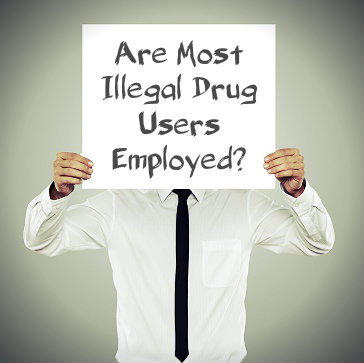 Annie Short, the manager of a Wisconsin-based wellness program, recently gave a talk called “Drug Abuse and the Cost to Businesses” at a wellness council luncheon. She urged her community to rethink the state’s consideration of legalizing marijuana. Because over 70 percent of individuals using illegal drugs are employed, the manager’s discussion posed a thought-provoking question: Are employers willing to let those drug abusers perform public services, such as bus drivers, police officers and pilots?
Annie Short, the manager of a Wisconsin-based wellness program, recently gave a talk called “Drug Abuse and the Cost to Businesses” at a wellness council luncheon. She urged her community to rethink the state’s consideration of legalizing marijuana. Because over 70 percent of individuals using illegal drugs are employed, the manager’s discussion posed a thought-provoking question: Are employers willing to let those drug abusers perform public services, such as bus drivers, police officers and pilots?
Short shared some statistics from a U.S. Department of Labor, Small Business Administration and the National Institute on Drug Abuse survey.
Workplace Drug-Use Stats:
- Employees who are substance abusers cause 40 percent of accidents that happen on the job
- Due to lost time, health care cost, worker’s compensation and accidents, drug abusers cost employers an estimated $81 billion annually
- Drug users are more likely to ask for time off, have repeated absences and be late for work
- Drug users are five times more likely to make a worker’s compensation claim
Employees Using Drugs And Stealing At Work?
Statistics from a national cocaine helpline reported that 75 percent of callers admitted to using drugs while working. They also reported that drugs had a noticeably adverse effect on their ability to complete their jobs. Eighteen percent of callers reported stealing from co-workers and employers to support their drug habits.
Drug-Free Changes For The Workplace
Community leaders and advocates against the legalization of marijuana have a clear message: Employers and companies must make a drug-free workplace a top priority. Employers should implement policies that have clear and strict discipline, with termination for employees who are found to be using drugs while working.
In order to have a workplace that is drug-free, employers should implement employee education, a substance abuse support program, training and regular drug testing.
Read More On What You Should Know About Substance Abuse In The Workplace
You know your partner battles an addiction and you’ve seen the toll it is taking on your relationship, not to mention your own well-being and sanity. Yet you stay. And the problem continues. How do you recognize an addict’s excuses? Is it possible to have a healthy relationship with an addict? Should you even try? How do you decide when it’s time to call it quits?
Unhealthy Attracts Unhealthy In Relationships
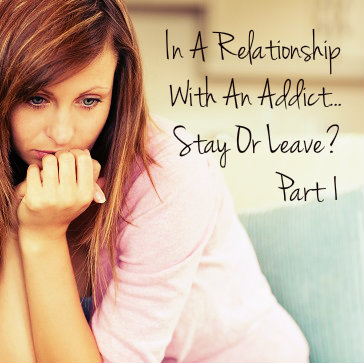 It helps to begin with a little soul searching. What keeps you in a relationship with an addict in the first place? The reality is that people who maintain relationships with addicts are often operating from a place of co-dependency and emotional neediness. Whether or not you stay in the relationship, it is probably time to start looking at some of your own issues.
It helps to begin with a little soul searching. What keeps you in a relationship with an addict in the first place? The reality is that people who maintain relationships with addicts are often operating from a place of co-dependency and emotional neediness. Whether or not you stay in the relationship, it is probably time to start looking at some of your own issues.
It is easy to make the relationship about the other person and his or her addiction and to be constantly focused on catering to the needs of the one who seems to be the “problem.” As a result, the non-addict doesn’t see the need to work on him or herself. In normal relationships, each partner is growing and changing in partnership with the other. In the case of a relationship with an addict, however, this normal growth and progression stagnates—often for both partners.
Examine Your Motives When In A Relationship With An Addict
People in relationships with addicts often avoid trying to honestly discover why they are in the relationship in the first place. No one can tell you it is time to end the relationship, but you might ask yourself why you think you want, or need, to stay.
Questions To Help You Work Through The Feelings Of Continuing Or Ending The Relationship With An Addict
- Are you afraid of being alone?
- Are you afraid you can’t find anyone better than your current partner?
- Do you believe that you can change him/her?
- Do you think you can love him/her out of the addiction and into a clean life?
- Do you optimistically believe that somehow things will just work out, even though there had been no evidence of that?
- Do you tell yourself it’s not that bad?
- Are you afraid of drastic consequences if you leave the addict? Has he or she threatened harm to self, you, or others if you end the relationship?
- Are you avoiding the hassle? Are you too lazy to make the break and deal with the consequences of splitting possessions and potentially having to find another place to live?
- Are you afraid to discuss the problems in your relationship or your desire to leave for fear of starting a fight? Are you afraid of physical abuse?
- Is the addict working to convince you there isn’t a problem, but maybe your gut is telling you differently?
- Has the addict vowed to go to AA, but failed to follow through?
- Do you think the addict can’t make it on his own without you?
- Are you afraid to present an ultimatum?
More “yes” answers than “no” suggest strong co-dependent tendencies.
Work On You And Your Own Issues
Any time spent in a relationship with an addict can be crazy-making. It is time to start working on you. Seeking your own recovery can often help you to better decide whether you should try to keep the relationship going or end it.
Start by attending an Al-Anon meeting in your area. Al-Anon can help you to better understand addictive patterns and tendencies and give you the tools and support for working with them. You will learn about yourself, and why you stay with an addict, and how to set better boundaries if you do stay in the relationship.
Co-Dependents Anonymous (CODA) is another group worth seeking out. Partners of addicts commonly suffer from codependent tendencies. A group like CODA takes the focus off of healing the addict and puts it onto healing and discovering you.
Whether or not you choose to stay with the addict, and whether or not he or she will get help, you need help and support in dealing with the addiction, and eventually healing from it.
People who have been brainwashed by a relationship with an addict often repeat unhealthy relational patterns in subsequent relationships. Attending Al-Anon can help the non-addict partner learn the realities of addiction and co-dependence, and can be an eye-opening experience of personal growth and development.
Hitting Bottom In The Relationship
As you wait for the addict to hit bottom and reach his or her limits, you might think about your own limits. What does it mean for you to hit bottom in this dysfunctional relationship? Partners of addicts become accustomed to responding to the needs of the addict without considering their own personal needs and preferences. In order to be ready to leave the relationship, you will have to hit your own bottom—the place of complete despair and desperation. It is at this point that you will be ready for a change. Have you hit bottom in your relationship with the addict?
Continued In – In A Relationship With An Addict: Stay Or Leave? Part 2
03 Jan 2014
How To Recognize An Addict’s Excuses
Making excuses for the habit is a cornerstone of being and addict. Until an addict can accept that he has a problem, you can expect to hear every excuse under the sun for why he abuses drugs or alcohol. If you suspect that someone you know and love has a problem, recognizing the common excuses can help you identify an addict and potentially stage a safe and healthy intervention. There are many creative excuses, but here are some of the most popular:
Popular Excuses Of Drug Addicts
- I’m not hurting anyone but myself – This is a classic excuse. Why can’t you leave him alone and let him live his life? He’s not hurting anyone else. If it were only that simple, maybe you would stop nagging him. Unfortunately your friend or family member does not live in a bubble and he needs to realize his habit is hurting others.
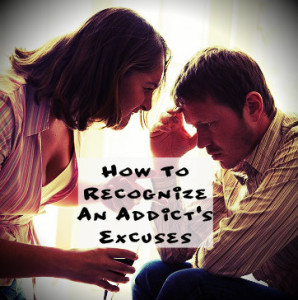 I need to use to be social – This is a common excuse used by introverts and the shy who have drug abuse problems. Drug or alcohol abuse should never be a crutch for socializing. In fact, it can make your friend look worse in social settings and can cause embarrassing situations.
I need to use to be social – This is a common excuse used by introverts and the shy who have drug abuse problems. Drug or alcohol abuse should never be a crutch for socializing. In fact, it can make your friend look worse in social settings and can cause embarrassing situations.
- I need to drink/use drugs to keep up at work – Using certain drugs can make a person feel high, powerful and energetic. Facing work and other responsibilities without the drug can seem daunting. Eventually, though, the drug abuse will catch up to him and make all responsibilities, at work and at home, more difficult.
- I only drink to relieve stress – And isn’t that how addiction begins? Drinking or using drugs is never a healthy way to cope with stress. The problems the habit causes will eventually create even more stress.
- I only use on the weekends/socially – There is no such thing as casual drug use. If your friend is getting high or drinking to pass out on Friday and Saturday nights, she still has a problem, and one that will only get worse.
- Everyone else does it – It may be true that you can look around a party and see people getting drunk, or even getting high, but you have no idea what their histories are. Comparing yourself to others is not a valid excuse to abuse drugs and alcohol.
- I can stop whenever I want to – As soon as someone utters this line, you can almost guarantee he has a problem. You should never have to convince others that you can quit whenever you want to. If you do, it means people are worried, and probably with good reason.
What You Can Do Once You Know The Addict’s Excuses
Being around someone who abuses drugs and alcohol or who is already a full-fledged addict means you are going to hear excuses. Learn to recognize them for what they are: pitiable reasons to continue using. When you know what to look and listen for, you can see addiction more clearly. Confront your friend or family member who is making these excuses and offer a solution: treatment.
Addiction is a disease, and like any physical disease, it requires treatment. Help your friend first recognize his problem by challenging his excuses. Then, be prepared to help him and to offer to get him into a treatment program. Doing it on his own will be a major challenge, but if you can be there to help him select a rehab program and to support him in his sobriety, he can succeed.
Read More On How Do I Know If I Am Enabling The Addict In My Life?
What words can describe how a parent feels watching their child attempt to cover life’s pain with substances? When a child has a full-blown addiction, there can be significant financial costs on top of the emotional ones. One book which attempts to relate the family pain of substance abuse also talks about the strain placed on the family budget when addiction takes over.
An Addict’s Desperate And Drastic Steps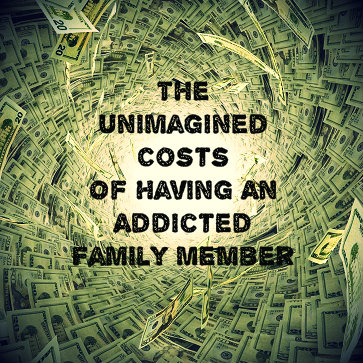
David Sheff’s Beautiful Boy recounts his son’s downward spiral with tales of missing credit cards, missing household items, missing checks and even missing coins from a sibling’s piggy bank. Addicts need their substance and they will do nearly anything to stay supplied. In this case, when the child left home and contacted mom and dad asking for more money, the desperate parents sent it.
If the addicted family member is a spouse, the financial dangers can become even greater. Joint bank accounts need to be watched carefully. The person may try to open a new line of credit in order to lay their hands on ready cash. In some cases, addicts have been known to frequent payday advance lending businesses.
What The Family Of An Addict Can Change
When this is the situation, the sober partner may need to take some more drastic steps. Names may need to be changed on bank accounts to protect savings. In extreme cases it may be necessary to establish a trust to safeguard the home and other major assets. The addiction can cost families inordinate amounts of capital, even when someone is maintaining vigilance. The drain can be devastating when fear is the only decision-maker.
When the child or spouse is at last ready to make a change, the costs for rehabilitation are not miniscule. As Sheff points out, money needs to be intentionally protected and then well-directed. Simply handing out money to a child not at home and on drugs isn’t always the best decision. However, investing in recovery is worth every penny.
Parents and spouses will need to make some very tough decisions about where to draw the financial line because addiction is costly. Often it will be helpful to talk with a mental health professional when making those kinds of decisions. They can offer dispassionate insight into whether it’s time for tough love or something else. When you’re in the middle of the situation, the overwhelming emotions can make it hard to reason wisely.
Finding Guidance When Dealing With The Addiction Of A Loved One
A biographical account cannot fully express what a family goes through when a member becomes addicted to alcohol or drugs, but it can lay out some of the potential landmines. Parents of children with addiction can learn from the mistakes of others. Get help when deciding how to support your loved one dependent on substances. There is a right time to close the billfold and a right time to open it again.
Read More To Find Out If You’re Enabling The Addict In Your Life And Break Free From The Cycle Of Broken Promises!
Alcohol consumption is illegal for all teenagers in the U.S. Despite this fact, significant numbers of teenagers drink, and therefore expose themselves to a range of health risks and social problems of alcohol. In a study published in October 2013 in the Journal of Child & Adolescent Substance Abuse, researchers from the Pacific Institute for Research and Evaluation looked at the way young, alcohol-consuming teenagers alter their drinking patterns as they grow older. These researchers found that most young teens manage to avoid any increases in alcohol consumption over time, while a small but significant minority of young teens experience either moderate or heavy increases in their consumption levels.
Alcohol Consumption Rates In Young Teens
 In collaboration with the University of Michigan, the National Institute on Drug Abuse tracks American teenagers’ level of involvement in substance use with an annual survey project called Monitoring the Future. According to results compiled from the 2012 version of this project, roughly 16 percent of all U.S. eighth graders consume alcohol at least once monthly. This rate follows a downward trend that first began in the mid-1990s.
In collaboration with the University of Michigan, the National Institute on Drug Abuse tracks American teenagers’ level of involvement in substance use with an annual survey project called Monitoring the Future. According to results compiled from the 2012 version of this project, roughly 16 percent of all U.S. eighth graders consume alcohol at least once monthly. This rate follows a downward trend that first began in the mid-1990s.
Figures gathered from Monitoring the Future also indicate that roughly 6 to 7 percent of all eighth graders in the U.S. participate in a dangerous form of consumption called binge drinking in any given two-week period. Binge drinking gets its name because participants binge on enough alcohol (typically, five drinks or more for boys and four drinks or more for girls) to become legally drunk in two hours or less.
Risky Behaviors Associated With Early Alcohol Consumption
Alcohol consumption has a strongly negative impact on teenagers, especially young teenagers below the age of 14, the National Institute on Alcohol Abuse and Alcoholism reports. Examples of the risks associated with drinking at this early age include higher rates of involvement in car crashes and other accidents, higher risks for homicide and suicide, higher rates for victimization in violent criminal acts such as assaults and rapes, increased chances of participation in disruptive conduct while in school, increased chances for poor academic results, an earlier onset of participation in sexual activity and increased risks for the practice of unsafe sex.
In addition, teen boys and girls who drink before the age of 14 tend to participate in binge drinking rather than moderate alcohol consumption. Critically, they also become alcoholics fully four times more frequently than people who don’t drink until they reach legal age.
Changes In Consumption Over Time
In the study published in the Journal of Child & Adolescent Substance Abuse, the Pacific Institute researchers looked at the ways in which young teenagers change their alcohol intake patterns as they grow up. The researchers also looked at the factors that help predict an increase in alcohol consumption among young teens. They undertook their project because only a few prior research groups had examined drinking patterns in this particular age group. All told, the study included 5,903 middle school teens. The researchers began tracking these teens when they were sixth graders and continued to track them through the eighth grade.
After completing the study’s primary phase, the researchers found that there are four emerging patterns of alcohol intake in middle school teenagers. Slightly less than 50 percent of all teens in this age group avoid drinking altogether or only drink on fairly rare occasion. Slightly more than 29 percent of all middle school teens initiate experimental alcohol use and continue to drink, but only increase their consumption levels to a minor extent over time. Fifteen percent of all middle schoolers start drinking significantly earlier than their alcohol-using peers, but still manage to keep their intake levels low. Slightly more than 6 percent of all children in this age group initiate alcohol use, and then fairly quickly begin consuming enough alcohol to rank as “heavy” drinkers.
Underlying Factors Of Teen Alcohol Use
The researchers concluded that the single biggest factor in forming any given young teen’s alcohol use pattern is his or her level of belief in the ability to control his or her rate of alcohol consumption. Young teens who believe they can control their drinking-related behaviors tend to do so, while those who don’t believe they can control their drinking tend to experience a spike in intake. Other factors identified as contributors to a young teenager’s alcohol intake pattern include the relative level of peer pressure he or she experiences for or against drinking, as well as the relative level of positive or negative feelings he or she has toward the effects and benefits of drinking.
Learn More About Detoxing From Alcohol And Gain Your Life Back!
Crystal methamphetamine (crystal meth) is an illegal, illicitly produced form of methamphetamine, a tightly controlled stimulant drug with limited but real usefulness as a legitimate medication. People who use/abuse this illegal product run significant risks for developing a range of serious or potentially deadly health complications. According to the results of a study published in October 2013 in the Canadian Medical Association Journal, teenagers and young adults who use crystal meth substantially increase their chances of getting involved in IV (intravenous) drug use, a form of drug use strongly associated with severe substance-related health problems.
How Methamphetamine And Crystal Meth Effects The Body
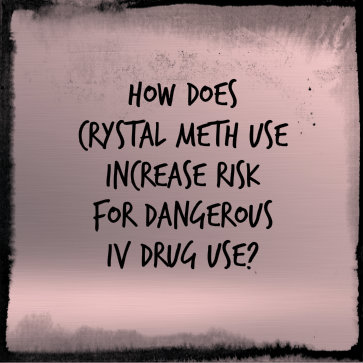 Methamphetamine is a close chemical relative of amphetamine; like that well-known stimulant medication, it produces euphoric sensations and sharply boosts the baseline activity rate inside the brain. Over time, the brain can get accustomed to methamphetamine’s effects and develop a dependence on the drug’s presence. In turn, dependence on methamphetamine is often a precursor for methamphetamine addiction, a highly disruptive and destructive combination of dependence, drug cravings and drug-oriented lifestyle patterns. Doctors occasionally prescribe legal, pharmaceutically manufactured methamphetamine to treat cases of narcolepsy, severe obesity or attention-deficit/hyperactivity disorder (ADHD).
Methamphetamine is a close chemical relative of amphetamine; like that well-known stimulant medication, it produces euphoric sensations and sharply boosts the baseline activity rate inside the brain. Over time, the brain can get accustomed to methamphetamine’s effects and develop a dependence on the drug’s presence. In turn, dependence on methamphetamine is often a precursor for methamphetamine addiction, a highly disruptive and destructive combination of dependence, drug cravings and drug-oriented lifestyle patterns. Doctors occasionally prescribe legal, pharmaceutically manufactured methamphetamine to treat cases of narcolepsy, severe obesity or attention-deficit/hyperactivity disorder (ADHD).
Crystal meth gets its name from its characteristic crystalline appearance. In America, most of the available supply of this drug comes from illegal, large-scale manufacturing facilities located on U.S. territory or in other countries. Some crystal meth also comes from small-scale operations that only service local areas. Depending on the process used during its creation, illegally made methamphetamine can contain a number of highly dangerous compounds, including sulfuric acid, acetone, hydrochloric acid or red phosphorus. Since use of crystal meth inevitably takes place outside of a legitimate medical context, it inherently constitutes a form of drug abuse. People who habitually use the drug have exceedingly high risks for developing an addiction or other major health problems such as drug overdoses, disturbed or violent mood shifts, extreme tooth and gum damage (meth mouth) and psychosis (hallucinations and/or delusional thought processes).
IV Drug Use
IV drug use is the common term for the purposeful injection of drugs directly into the bloodstream. As a rule, doctors and other medical professionals use this term in reference to the injection of recreational substances rather than medications. IV drug abusers commonly rely on direct bloodstream access to rapidly deliver substances to their brains, and thereby rapidly trigger the effects associated with those substances. IV drug injection carries risks above and beyond the risks classically associated with recreational drug use in general.
IV Drug Use Risks
- Increased chances of drug overdose
- Dangerous or lethal infections such as hiv/aids or hepatitis b or c
- Lethal infection-related complications such as bacteremia or sepsis
- Increased chances of developing pneumonia
- And increased chances of dangerous contaminants or additives
How Crystal Meth Use Increases Chance Of Falling Into IV Drug Use
In the study published in the Canadian Medical Association Journal, researchers from several Canadian institutions used information gathered from a project called the At-Risk Youth Study to examine the potential connection between crystal meth use and the initiation of IV drug use among teenagers and young adults between the ages of 14 and 26. All told, 991 individuals submitted answers to questionnaires regarding their baseline drug-using behaviors. At the beginning of the study, 395 of these individuals were crystal methamphetamine users, while another 390 were IV drug users. The researchers tracked the drug use patterns of all 991 participants over five years in order to uncover any developing trends.
Altogether, 16 percent of the participants not initially involved in IV drug use began taking drugs intravenously over the course of the study. After analyzing their data, the researchers found that the recent use of a non-injectable form of crystal methamphetamine is clearly linked to increased chances of beginning IV drug use. In most cases, prior users of non-injectable crystal meth choose this drug for their first forays into intravenous use. The researchers also found that the average young user of crystal meth who initiates IV drug intake makes the transition to intravenous use at the exceptionally early age of 14.
Meth Treatment Significantly Needed In City, Street Culture
The authors of the study published in the Canadian Medical Association Journal gathered their data from young people either living on the street or heavily involved in local street culture. They believe that their findings indicate an urgent need to address crystal methamphetamine use in this population and curb the transition to IV drug use.
Read More About The Connection Between Hepatitis C And IV Drug Users And Get Help Today!
Hepatitis C is a form of serious, liver-damaging illness triggered by infection with a virus commonly known as the hepatitis C virus (HCV). Current evidence indicates that, throughout the U.S. and the rest of the world, the majority of new cases of this illness stem from the unsanitary injection of IV drugs (intravenous drugs). In a study published in June 2013 in the Harm Reduction Journal, a multi-institution research team reviewed some of the potentially overlooked factors that contribute to the ongoing connection between IV drug use and HCV infection. The researchers concluded that patient-doctor miscommunication and lack of access to required resources have a considerable impact on the reinforcement of this connection.
How Is Hepatitis C Spread?
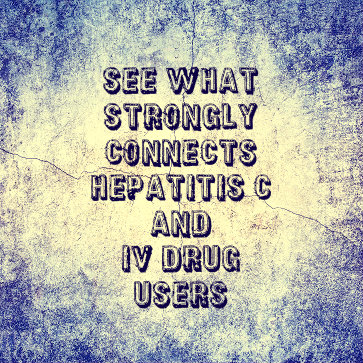 Hepatitis C is one of four viral diseases that get their names because they damage function inside the human liver. It is a blood-borne illness that typically occurs when an individual with HCV knowingly or unknowingly exposes others to his or her infected blood. Common routes for this exposure include intentional or accidental needle sticks or injections, as well as the accidental entry of infected blood through a cut or through the mouth. Additional, less common potential routes of exposure include mother-to-child transmission inside the womb, organ transplant procedures, kidney dialysis procedures and blood transfusions.
Hepatitis C is one of four viral diseases that get their names because they damage function inside the human liver. It is a blood-borne illness that typically occurs when an individual with HCV knowingly or unknowingly exposes others to his or her infected blood. Common routes for this exposure include intentional or accidental needle sticks or injections, as well as the accidental entry of infected blood through a cut or through the mouth. Additional, less common potential routes of exposure include mother-to-child transmission inside the womb, organ transplant procedures, kidney dialysis procedures and blood transfusions.
Hepatitis C Symptoms
The hepatitis C virus can produce either acute (short-term) infections or chronic (long-term) infections. In both cases, affected individuals often have few or no early symptoms of the changes going on inside their livers. If early symptoms do occur, they are as follows.
Early Hepatitis C Symptoms
- Jaundice
- Loss of energy
- Spikes in body temperature (i.e., fevers)
- Swelling in the abdomen
- Abdominal pain in the liver region
- Nausea and vomiting
- Declining appetite
Eventually, people affected by chronic hepatitis C can develop serious or potentially fatal cases of cirrhosis (liver scarring) or liver cancer. Roughly 75 percent to 85 percent of people who contract hepatitis C develop the chronic form of the illness.
IV Drug Use And Risky Behaviors
IV drug users have an uncommonly high rate for hepatitis C (and a number of other serious, infectious diseases) for several reasons. First, the introduction of a hypodermic needle into a vein provides direct access to a person’s bloodstream. In combination with poor needle-related hygiene, this method of drug use provides the hepatitis C virus with a very easy avenue for entry into the human body. The most common unhygienic practice associated with transmission of the virus is the sharing of dirty needles among two or more drug users. In addition, people who take drugs intravenously often establish other patterns of behavior that can further increase their risks for HCV exposure. Examples of these harmful behavioral patterns include having unprotected intercourse with intimates and engaging in sex-for-drugs exchanges with others.
Factors For The Connection Between Hepatitis C Infections And IV Drug Use
In the study published in the Harm Reduction Journal, researchers from seven U.S. institutions looked at some of the lesser-known factors that can account for the strong, enduring connection between IV drug use and hepatitis C infections. Rather than take a large-scale approach, they focused on 14 groups of IV drug users in the San Francisco area and the New York City area. Altogether, these groups contained 95 individuals. Each of the participating individuals took part in a series of discussions designed to identify specific hindrances to the adequate prevention or treatment of HCV in IV drug-using populations.
After reviewing and analyzing the results of the participants’ discussions, the researchers identified several potential barriers to the receipt of adequate services or the accurate transmission of HCV-related information from doctors and other health care professionals to people who use IV drugs. These barriers include lack of a full understanding among IV drug users about the significance of an HCV diagnosis, lack of drug user knowledge regarding the symptoms and potential consequences of hepatitis C, a poor drug user understanding of the need to monitor the course of a hepatitis C infection, lack of facilities where intravenous drug users can actively seek out HCV testing, and lack of a broad range of options for the treatment of diagnosed cases of hepatitis C.
Health Care Professional’s Role In HCV/ Hepatitis C Treatment
In light of their findings, the authors of the study published in the Harm Reduction Journal concluded that health care professionals must increase their efforts to relay accurate, sufficiently detailed information about HCV and hepatitis C. They also concluded that these improved educational efforts must take place both in drug treatment centers and in facilities that perform disease screenings.
Read More About IV Drug Users And Other Dangerous Risks
20 Nov 2013
Flesh-Eating Krokodil Claims U.S. Victims?
Desomorphine, also known by the Russian nickname Krokodil or the English language equivalent Crocodile, is a synthetic substance based on the opioid narcotic drug morphine. This drug, outlawed in America, has much stronger chemical effects than morphine and produces severe side effects in long-term users that can include tissue destruction, limb loss or death. Desomorphine users commonly take a homemade form of the drug that contains one or more additional toxic substances. Until recently, desomorphine abuse was not known to affect any segment of the U.S. population. However, in September 2013, the country’s first identified cases of this abuse allegedly occurred in Phoenix, Arizona.
Desomorphine Basics
 Morphine is an opioid substance taken directly from the sap of a plant called Papaver somniferum (commonly referred to as the opium poppy). Like all other natural and synthetic opioids, it achieves powerful, potentially addicting drug effects by accessing key portions of the brain and creating intense spikes in pleasure levels, as well as a reduced ability to feel pain. Desomorphine was invented in a laboratory setting in the 1930s by changing morphine molecules’ natural chemical structure. Compared to morphine, it produces roughly 10 times the level of effect at any given dose. This drug effect comes on rapidly and also fades away in a relatively short amount of time.
Morphine is an opioid substance taken directly from the sap of a plant called Papaver somniferum (commonly referred to as the opium poppy). Like all other natural and synthetic opioids, it achieves powerful, potentially addicting drug effects by accessing key portions of the brain and creating intense spikes in pleasure levels, as well as a reduced ability to feel pain. Desomorphine was invented in a laboratory setting in the 1930s by changing morphine molecules’ natural chemical structure. Compared to morphine, it produces roughly 10 times the level of effect at any given dose. This drug effect comes on rapidly and also fades away in a relatively short amount of time.
Even in its most chemically pure form, desomorphine is capable of producing significant damage when used repeatedly over time. The most common side effect of chronic use—a form of blood vessel and soft tissue damage that results in green, scaly skin—gives the drug its nickname, Krokodil (Crocodile). If left untreated, desomorphine-related vessel and tissue damage can ultimately result in tissue death (gangrene) or a clot- and inflammation-based ailment called thrombophlebitis. People with these conditions can lose their affected limbs to amputation or even die. Doctors can potentially combat the active drug effects of desomorphine with the anti-narcotic medication naloxone or other treatments used to address heroin addiction. However, there is no specific, fully developed treatment for the drug. In addition to dealing with the brain effects of desomorphine addiction, doctors commonly need to address the severe physical injuries associated with the drug’s use.
Desomorphine Abuse
Today, desomorphine abuse doesn’t typically involve batches of the drug made in a laboratory. Instead, most users make an injectable form of the drug themselves by boiling tablets of another opioid narcotic, called codeine, then combining the resulting liquid with any one of a number of additional toxic additives, including gasoline, red phosphorus, hydrochloric acid or paint thinner. Together, these substances can produce a level of blood vessel and tissue damage far above that associated with pure desomorphine, and users can develop large pockets of rotting flesh or even lose their flesh all the way down to the bone. Current evidence indicates that chronic users of “bootleg” Krokodil commonly die within a period of two or three years.
International Patterns of Krokodil Usage
The first known cases of bootleg Krokodil abuse occurred among heroin users in Russia in 2003. These users were looking for a cheaper alternative to the normally available narcotics in their country. According to current estimates, roughly 1 million people in Russia and another million people in other European regions use the drug. However, these estimates are likely quite imprecise, and no one really knows how many people in Europe or other areas across the globe take some form of Krokodil. In the U.S., desomorphine belongs to a highly restricted class of substances called Schedule I substances. All drugs with this federal classification are illegal, present a strong potential for the onset of abuse and/or addiction, and have no accepted usefulness in medical treatment. Still, some amount of pharmaceutical-grade desomorphine likely enters the U.S. through illegal Internet sales or other unlawful avenues. Americans also have access to the materials required to make bootleg desomorphine.
First Krokodil Cases In The U.S.
In September 2013, a poison control center in Phoenix, Arizona, reported two cases of Krokodil abuse among local residents. The directors of this facility believe that the cases in question are related, a situation that indicates that use of the drug is not widespread. However, since they represent the first nationally reported incidences of Krokodil abuse in the U.S., the two cases are naturally garnering significant amounts of scrutiny and media attention. As of now, no one can truly say what course the use of homemade desomorphine will take among American IV drug abusers in the years and decades to come.
Read More About The Zombie Drug Finding It’s Way To The U.S.


